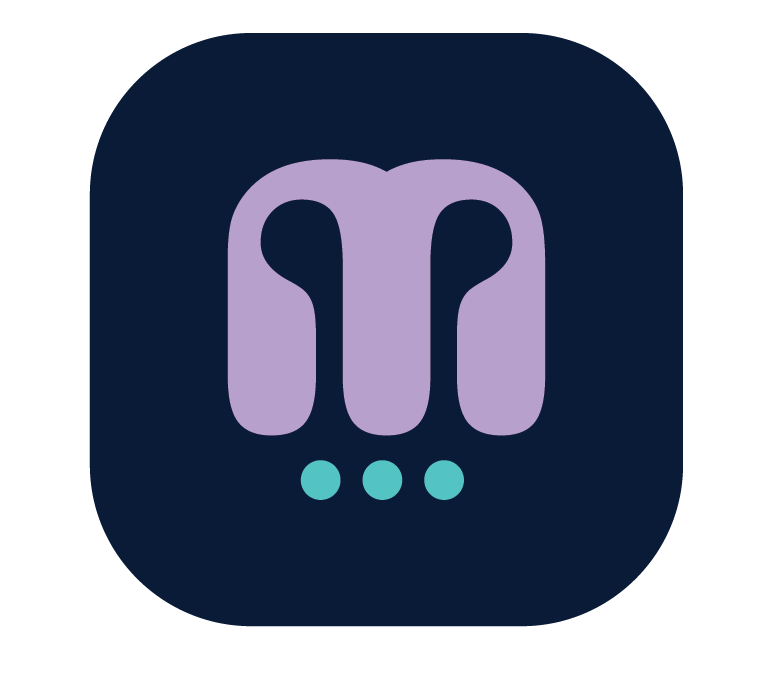1. Technical Approach
- Technology Selection:
- Microsoft Bot Framework: The core framework for building bots that supports various channels like Microsoft Teams, Slack, Facebook Messenger, etc.
- Bot Builder SDK: The SDK provides tools and libraries to create conversational bots with C#.
- LUIS (Language Understanding Intelligent Service): An AI service from Microsoft that helps with natural language understanding and intent recognition.
- Large Language Models
- Azure Web App: For hosting the bot as a web service.
- Azure Cognitive Services: To leverage additional AI capabilities like Text Analytics for sentiment analysis, QnA Maker for knowledge base integration, etc.
- Language Translator APIs
- Bot Architecture - The bot will follow a typical conversational agent architecture, which includes the following components:
- Bot Connector: The entry point that handles communication between the bot and various messaging channels.
- Bot Builder SDK: The core logic of the bot is implemented using the Bot Builder SDK, which provides classes and functions for processing user input and generating responses.
- LUIS Integration: Integrate LUIS to extract user intent and entities from user messages to understand user queries better.
- Dialog Management: Use the Dialog system provided by the Bot Builder SDK to manage multi-turn conversations with users.
- Azure Cognitive Services Integration: Integrate additional Azure Cognitive Services like Text Analytics or QnA Maker to enhance the bot's capabilities.
- Bot Development:
- Define the conversation flow by creating dialogs using the Bot Builder SDK.
- Integrate LUIS into the bot to recognize intents and entities from user input.
- Implement custom handlers for different intents to generate appropriate responses or trigger actions.
- Integrate with backend systems (if required) using APIs or connectors.
- Implement authentication and authorization mechanisms for secure interactions (if needed).
- Challenges and Solutions:
- NLP Accuracy: Ensure that LUIS is trained with enough varied data to achieve high intent recognition accuracy. Regularly review and update the LUIS model based on user feedback and real-world usage.
- Handling Ambiguity: Design the bot with context-awareness to handle ambiguous queries and prompt users for clarifications if required.
- Error Handling: Implement a fallback mechanism to gracefully handle scenarios where the bot does not understand the user's query or encounters errors.
- Integration Complexity: Integrating with backend systems can be complex. Plan for robust error handling and consider caching strategies to optimize response times.
- Security: Follow best practices for securing the bot, including token-based authentication, input validation, and data privacy compliance.
- Testing and Deployment:
- Test the bot extensively in different scenarios to identify and fix issues.
- Deploy the bot to Azure Web App or any other suitable hosting platform.
- Monitor the bot's performance and usage to identify areas of improvement.
- Continous Improvement:
- Gather user feedback and usage analytics to continuously improve the bot's performance and user experience.
- Regularly update the bot's knowledge base and responses to stay up-to-date with changing user needs.
2. Quality Assurance and Testing
- Unit Testing:
- Test individual components and functions of the bot to ensure they work as expected.
- Write unit tests for each intent handler, dialog, and other critical bot functionalities.
- Use testing frameworks like xUnit (C#) for unit testing.
- Functional Testing:
- Validate the overall functionality of the bot by testing different intents and dialogs.
- Ensure that the bot responds appropriately to different user inputs and scenarios.
- Cover all possible conversation paths to identify and fix logic or flow issues.
- Integration Testing:
- Test the integration of the bot with external services like LUIS and backend systems.
- Check the data flow between the bot and other services to ensure seamless communication.
- User Acceptance Testing (UAT):
- Conduct UAT with real users or stakeholders to get feedback on the bot's usability and user experience.
- Gather user feedback to identify potential improvements and iterate on the bot's design and functionality.
- Load Testing:
- Test the bot's performance and response time under different levels of simulated user traffic.
- Use load testing tools like JMeter or Azure DevOps for this purpose.
- Identify bottlenecks and potential issues under high load conditions.
- Security Testing:
- Perform security assessments to identify vulnerabilities and potential risks.
- Check for input validation, data privacy compliance, and protection against common attacks like SQL injection or Cross-Site Scripting (XSS).
- Error Handling Testing:
- Validate how the bot responds to unexpected or invalid user inputs.
- Ensure that error messages are informative and help users understand how to correct their queries.
- Regression Testing:
- After each update or enhancement, perform regression testing to ensure that existing functionalities are not affected.
- Use automated regression testing to speed up the process and reduce the chance of human error.
- Usability Testing:
- Evaluate the bot's user interface and conversational flow from the user's perspective.
- Check if the bot's language is clear, concise, and user-friendly.
- Optimize the user experience to minimize the need for user clarification or rephrasing.
- Cross-Platform Testing:
- Test the bot on different devices and platforms to ensure consistent behavior and appearance.
- Verify compatibility with various web browsers, mobile devices, and messaging platforms.
- Continuous Monitoring:
- Monitor the bot's performance and usage in real-world scenarios post-deployment.
- Utilize analytics and user feedback to identify areas of improvement and to plan future updates.
3. Support and Maintenance
Maintenance Support
- Software updates and patches:
- Fix bugs, address security vulnerabilities, and improve the overall functionality of MilaBot.
- Troubleshooting and issue resolution:
- Resolve any issues that arise with MilaBot.
- Technical support and assistance:
- Provide technical support and assistance.
- System performance monitoring:
- Monitor system performance and identify potential issues before they become critical.
- Monitor the bot's performance, usage patterns, and user interactions continuously.
- Use analytics and logging to identify potential bottlenecks, errors, or usage patterns that need improvement.
- Periodic system upgrades:
- Conduct periodic system upgrades to ensure compatibility with BotFramework versions.
- Regularly release bug fixes and updates to address reported issues and improve the bot's functionality.
- Schedule periodic maintenance releases to keep the bot up-to-date with the latest technologies and libraries.
- Monitoring and improvement:
- Monitor and improve the availability, performance, and reliability of the MilaBot service.
- Ensure compliance with industry standards and regulations.
- Continuous Improvement:
- Gather user feedback and insights to identify areas for improvement.
- Analyze user interactions to identify common user challenges and optimize the bot's responses.
- Plan for regular iterations and enhancements based on user feedback and changing user needs.
- Proactive Support:
- Proactively address potential issues by monitoring system health and proactively fixing any potential bottlenecks or performance concerns.
- Scalability and Performance:
- Regularly assess the bot's scalability and performance as the user base grows.
- Optimize the system to handle increasing user loads and ensure a smooth user experience.
- Version Control and Rollbacks:
- Implement version control to manage code changes effectively.
- Be prepared for rollbacks in case of any unforeseen issues with new releases.
Support Agreement
- Dedicated Support Team:
- Establish a dedicated support team to handle user inquiries, feedback, and reported issues promptly.
- Define response time targets for addressing different types of issues based on their severity (e.g., critical, major, minor).
- Ticketing System
- Issue Tracking and Management:
- Implement an issue tracking system to log and manage reported problems efficiently.
- Assign priorities to issues and ensure they are addressed in a timely manner.
- Regularly update users on the status of their reported issues.
4. Communication and Collaboration
Development Process
- Regular Status Meetings:
- Schedule regular status meetings or stand-ups with the development team to discuss progress, challenges, and next steps. These meetings can be weekly or bi-weekly, depending on the project's complexity.
- Project Management Tools:
- Use project management tools to track tasks, assign responsibilities, and monitor progress. These tools facilitate transparency and help stakeholders stay updated on the project's status.
- Task Boards:
- Set up task boards with clearly defined user stories, tasks, and their statuses. This visual representation helps everyone involved in the project to have a clear understanding of the work in progress.
- Progress Reports:
- Provide periodic progress reports to stakeholders, detailing achieved milestones, any deviations from the initial plan, and potential risks or challenges encountered during development.
- Version Control and Code Reviews:
- Implement version control (e.g., Git) for code management and encourage code reviews to ensure quality and consistency in the development process.
- Prototype and Demo Sessions:
- Schedule regular prototype or demo sessions to showcase the bot's functionalities and gather feedback from stakeholders.
- Documentation:
- Maintain comprehensive documentation, including design documents, architectural diagrams, and user guides, to keep stakeholders informed about the development process and the bot's capabilities.
Normal Operation
- Support Channel:
- Set up a dedicated support channel (e.g., email, chat, help desk, ticketing system) where users can report issues, ask questions, and provide feedback.
- Issue Tracking System:
- Use an issue tracking system to log and manage user-reported issues efficiently. Ensure timely responses and updates on the status of reported issues.
- User Communication:
- Regularly communicate with users about the bot's functionalities, updates, and any planned maintenance. Use newsletters or in-app notifications for these updates.
- Monitoring and Analytics:
- Continuously monitor the bot's performance, usage, and user feedback using analytics tools. These insights can help identify areas for improvement and prioritize enhancements.
- User Surveys:
- Conduct periodic user surveys to gather feedback on the bot's performance and user satisfaction. Use this feedback to drive continuous improvement efforts.
- Real-time Notifications:
- For critical issues or outages, implement real-time notifications to inform stakeholders promptly.
- Emergency Response Plan:
- Have an emergency response plan in place to handle critical issues swiftly and efficiently. This plan should include escalation paths and actions to be taken in case of emergencies.
- Scheduled Updates:
- If the bot requires scheduled maintenance or updates, communicate these events well in advance to minimize disruption for users.
Data Security and Privacy
- Data Collection and Use:
- Clearly outline what types of personal information are collected, how they are collected, and the purposes for which they will be used.
- Consent:
- Obtain explicit consent from users before collecting any personal information. Inform users about the purposes of data collection and their rights related to their data.
- Data Storage and Security:
- Describe the measures in place to safeguard user data against unauthorized access, loss, or theft. Use encryption and secure storage practices.
- Data Sharing:
- If data is shared with third parties, clearly state the purposes and ensure that data is shared securely and in compliance with relevant laws.
- Data Retention:
- Define the duration for which personal information will be retained and when it will be securely deleted or anonymized.
- User Rights:
- Explain the rights of users regarding their data, including the right to access, rectify, or delete their personal information.
- Children's Privacy:
- If the bot is intended for use by children, have specific measures to comply with children's privacy laws and obtain parental consent where necessary.
- Incident Response:
- Outline procedures to handle data breaches or incidents involving personal data.
- Data Protection Officer:
- Designate a Data Protection Officer or responsible individual for overseeing data protection and privacy matters.
- Updates to Policy:
- Inform users about any updates or changes to the Personal Information Protection policy.
Contact
Contact Us
Location:
Diogenous 1 Block A, 4th floor, 2404 Engkomi Nicosia, Cyprus
Email:
info@acgoldman.com
Call:
+357 22 357222



